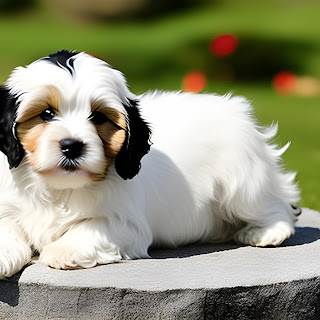The Havanese Dog Breed: A Complete Profile
The Havanese dog breed, Cuba's national dog, is a small yet charming companion that has been stealing hearts worldwide. Known for their silky coats, expressive eyes, and cheerful demeanor, these little dogs make excellent family pets. In this article, we will explore the Havanese breed's history, characteristics, grooming needs, and health concerns to provide you with a complete profile of this adorable dog.
History
The Havanese breed traces its roots back to the Bichon family of dogs, which originated in the Mediterranean region. Spanish traders brought these dogs to Cuba in the 16th century, where they quickly became popular among the island's aristocracy. Over time, the Havanese developed into a distinct breed, adapting to the tropical climate and earning the nickname "Havana Silk Dog." Despite their popularity in Cuba, the breed was relatively unknown outside the island until the Cuban Revolution in 1959. After that, many Cuban refugees brought their beloved Havanese dogs to the United States, where the breed eventually gained recognition by the American Kennel Club (AKC) in 1996.
The Havanese dog is in the Toy Group class.
Physical Characteristics
The Havanese is a small, sturdy dog with a slightly rectangular body and a plumed tail that curls over its back. They typically weigh between 7 and 13 pounds and stand 8.5 to 11.5 inches tall at the shoulder. Their expressive eyes and button nose give them an endearing appearance that is hard to resist.
One of the most notable features of the Havanese breed is their silky coat. The hair is long and wavy, with a soft texture that feels like silk to the touch. Coat colors can vary widely, including white, cream, fawn, black, silver, chocolate, and various combinations of these shades.
Temperament
Havanese dogs are known for their friendly and affectionate nature. They are social animals that thrive on human companionship and enjoy spending time with their families. This breed is intelligent and eager to please, making them highly trainable and well-suited for various dog sports and activities. They are also excellent with children and other pets, making them a great choice for families.
Grooming Needs
The Havanese's long, silky coat requires regular grooming to keep it tangle-free and looking its best. Brushing should be done at least two or three times per week to prevent mats from forming. Some owners choose to keep their Havanese's coat clipped short for easier maintenance.
The cost of grooming a Havanese can vary depending on several factors such as the location, the groomer, and the specific services needed. However, generally speaking, grooming a Havanese is not considered an expensive task compared to some other dog breeds.
Havanese dogs do require regular grooming to maintain their long, silky coat, which can be time-consuming if done at home. Some Havanese owners choose to take their dogs to a professional groomer every 4-6 weeks for a full grooming session that includes bathing, trimming, and styling. The cost of such a session can range from $50 to $100 or more depending on the location and services provided.
However, some Havanese owners learn to groom their dogs at home, which can save money in the long run. Regular grooming at home can help prevent matting and keep the coat looking healthy and shiny.
In addition to brushing, regular bathing is necessary to keep their coat clean and healthy. Trim their nails regularly and check their ears for signs of infection or debris buildup.
Havanese puppies can be expensive, depending on where you purchase them from and their lineage. It's important to do your research and find a reputable breeder to ensure the health and well-being of your new furry friend.
Health Concerns
Havanese dogs are generally healthy, with a life expectancy of 14 to 16 years. However, like all breeds, they can be prone to certain health issues. Some common concerns include hip dysplasia, patellar luxation, cataracts, and liver shunts. Responsible breeding practices can help reduce the risk of these issues.
To maintain your Havanese's overall health, schedule regular check-ups with your veterinarian, provide a balanced diet, and ensure they get plenty of exercise.
There are several famous Havanese dogs! Some of them include:
- Tori, the Havanese owned by actress Betty White
Here are 5 facts about the Havanese dog breed:
1. Havanese dogs are a small breed that originated in Cuba and were once known as "Havana Silk Dogs" due to their silky coat.
2. They are highly adaptable and can do well in both city and country living situations.
3. Havanese dogs are known for being affectionate and social, often forming strong bonds with their owners.
4. They are intelligent and trainable, making them a good choice for obedience competitions.
5. Havanese dogs have a long lifespan, with an average life expectancy of 14-16 years.
Research Other Dog Breeds
Conclusion
The Havanese breed is an endearing and adaptable companion that is well-suited for families, singles, and seniors alike. Their friendly temperament, intelligence, and loyalty make them a joy to have around. With proper care and regular grooming, you can enjoy many years of love and companionship with your Havanese dog.
.jpg)
.jpg)
.jpg)
.jpg)
.jpg)
.jpg)

.jpg)
.jpg)
.jpg)
